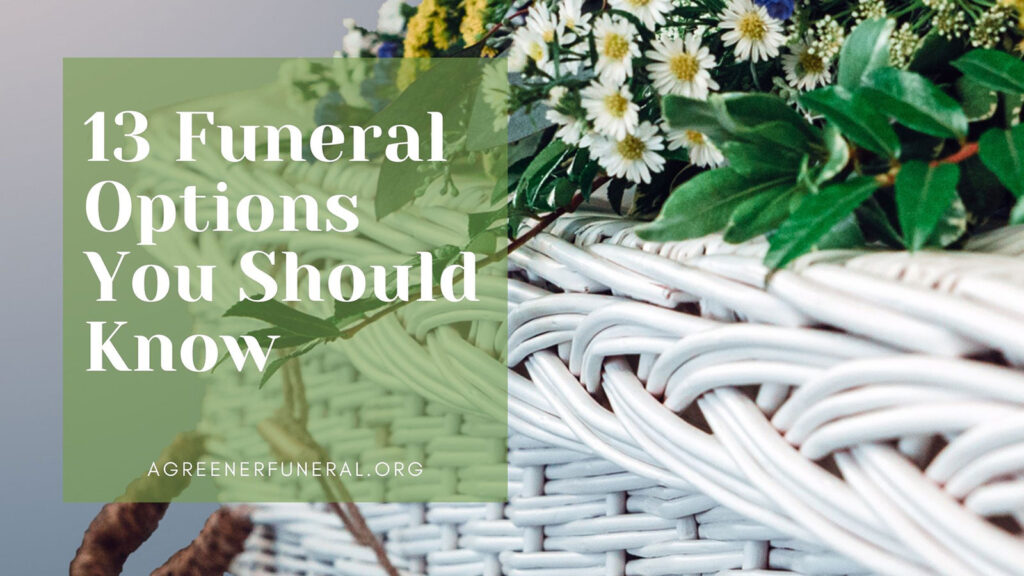13 Funeral Options You Should Know
13 Funeral Options You Should Know
Funeral planning is a subject that many people don’t consider until the decision is brought to them, and most people think there are two options: burial or cremation.
The truth is that the options available to families today are more numerous than most people outside the industry (and many people inside the industry) realize. Selecting a funeral option that truly resonates with you and your loved ones can be a powerful tool to help the grieving and healing processes after losing someone close. Read on for a surface-level look into the various funeral options available to families today.
Burial
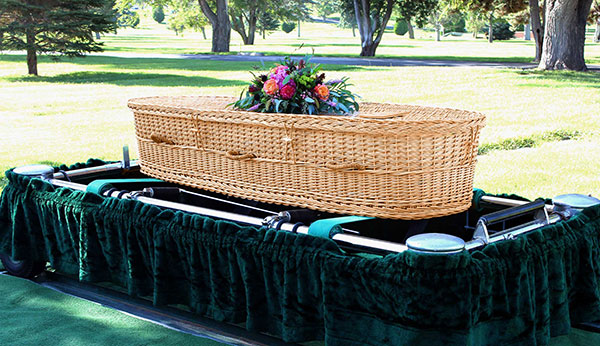
Burial is the process of putting a body and casket underground, most often in a cemetery. A burial can be the most eco-friendly or the least eco-friendly form of a funeral, depending on the type of burial one selects.
Traditional Burial
Traditional burial is the most well-known type of funeral. In a traditional funeral the body is embalmed with formaldehyde-based fluid and prepared for a viewing or memorial service, usually in a funeral home’s chapel. The embalmed body and casket are then buried in a traditional cemetery. Between the casket and earth lies a “burial vault”, an outer receptacle that houses the casket and protects it from the weight of the earth and heavy maintenance equipment that will pass over the grave.
Green Burial
A green burial is similar to a traditional burial, but without anything “unnatural” or “unnecessary.” The body is not embalmed before burial, and is buried in a “green cemetery” (many traditional cemeteries today are reserving space for green burials as well). There is usually a higher level of participation from friends and family, which helps them process their loss, and the entire funeral is often said to be touching and healing experience for those involved.
Instead of a traditional casket, green burials use a green casket or burial shroud that will naturally biodegrade over time. Instead of a traditional headstone, green cemeteries often use natural stones or no grave markers at all, to keep the cemetery in its natural state.
Natural Burial
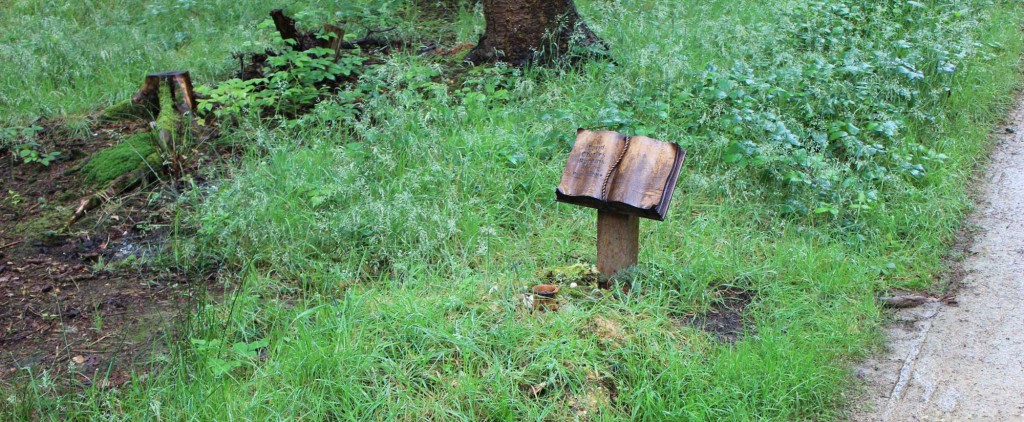
Often used interchangeably with the term “green burial”, a natural burial actually has some differences. Natural burials combine elements from both green and traditional burials. In a natural burial the body is not embalmed and a biodegradable casket is used, but the burial can take place in a traditional cemetery. A simple headstone is used, and a natural burial has a more defined gravesite similar to a traditional burial. A burial vault may still be used if the cemetery requires it.
Cremation
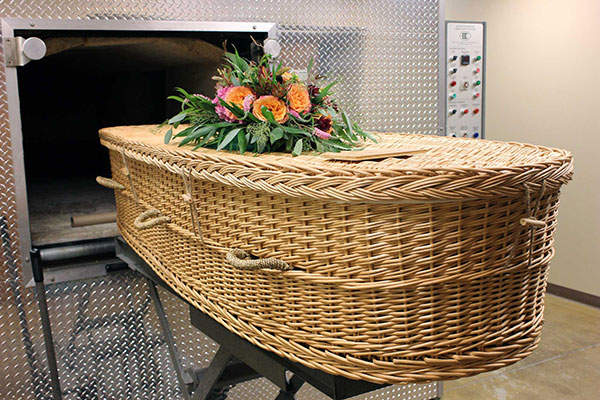
Cremation is the most common funeral choice for families today, and continues to rise in popularity. Not only is it usually the cheapest option, people also value the simplicity and control it gives them over their funeral experience. A container is required for cremation, and while most bodies end up being cremated in a cardboard box, there are Fair Trade certified bamboo cremation containers and shrouds that are also suitable. The true value in cremation lies in the flexibility with what comes next. Families are able to take the cremated remains and scatter them somewhere meaningful, keep them at home, create mementos like memorial jewelry, and so much more. Today there are two popular methods for cremation.
Flame-Based Cremation
Flame-based cremation is the most common form of cremation and uses flame and heat to reduce the body to bone fragments, which are processed and returned to the family. Filtration systems are available to crematories that drastically reduce the greenhouse gas emissions from flame based cremation. These systems are required in many countries like the UK, but are rare in the USA.
Water-Based Cremation
Water-based cremation is similar to flame-based cremation, but instead of flame the process uses heat, pressure, and an alkaline solution to accelerate the natural process of decomposition. This process is relatively new and currently more expensive than flame-based cremation, but the process has a much smaller environmental impact than flame-based cremation.
What Comes After Cremation?
The most basic funeral question, “cremation or burial?”, misleads people into thinking those options encompass the entire funeral. While burial is relatively standardized from start to finish, cremation is just the beginning of a funeral – the preparation of the body, similar to embalming. What comes after cremation is where the true value lies for families, because that is when they will honor, remember, grieve for, and heal after a loss.
Scattering

Scattering is the most common choice after cremation. Remains can be scattered at a cemetery, but more often people choose a location that holds meaning to them and the deceased. We may imagine scattering as pouring of remains out of a container, but really the core of scattering is simply that the remains are laid to rest somewhere and not kept in an urn at home. Entire new experiences and memorial ceremonies are possible when scattering. Products like Scattering Tubes elevate and personalize the scattering experience as we know it, and biodegradable urns are an ideal choice for families wanting to lay the remains to rest along with the urn itself. Both of these options allow families to scatter remains in a more elegant and eco-friendly way.
Earth & Water Biodegradable Urns
Biodegradable urns allow families to expand their options after cremation. Many biodegradable urns are semi-permanent, meaning they can be kept at home like a traditional non-biodegradable urn until the family is ready to lay the remains to rest. Earth biodegradable urns are meant to be buried in the earth, where they will naturally biodegrade over time. Water biodegradable urns are meant to be placed into a body of water during a memorial service, where they will sink and dissolve over time, leaving no harmful materials in the water.
Memorialization
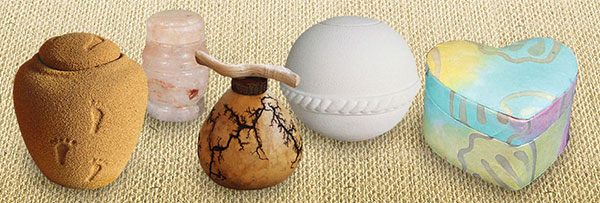
Memorialization is an incredibly broad topic, and the possibilities here are endless. There are many options today to take a portion of the remains from a cremation and turn them into memorial pieces. Unique, custom memorial jewelry is a very popular choice, as well as small memorial keepsakes. But the options for memorialization go much further; you could have your remains pressed into a vinyl record with a recording of the deceased, blown into a piece of glass art, or used in countless other ways. Memorialization options let you keep a loved one close by in a personal manner, without keeping an entire urn full of remains.
Be a Tree
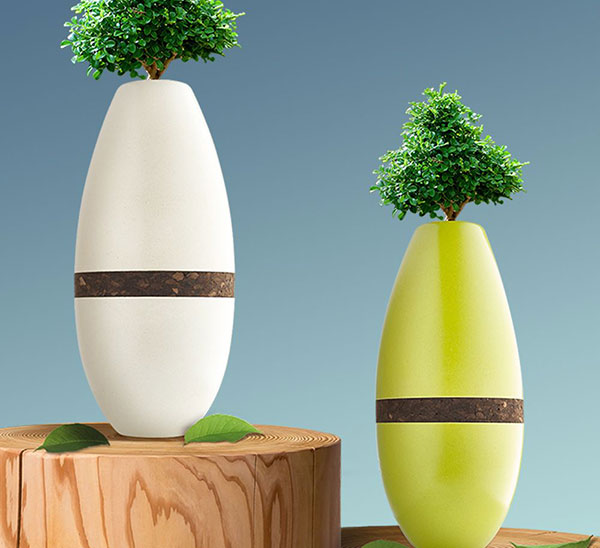
The idea of “becoming a tree” after life has gained a lot of traction, and it’s obvious why; the prospect of still being near loved ones as a part of a beautiful living organism after death is hard to beat. While no options are publicly available to grow a tree directly from a body, urns like the Biotree Urn can make this possible. Cremated remains are placed in a section separate from the tree and dirt at first. As the tree roots grow, the remains are treated by the water and cork inside to neutralize their pH, allowing tree roots to healthily grow among them (the pH of untreated cremated remains can hinder growth and could kill a tree). This urn is also semi-permanent, and can be kept inside while the tree becomes situated in the soil. When it begins to crack, the urn and tree should be planted.
Keep at Home
Many families opt to keep the cremated remains of a loved one with them at home. While a wide range of traditional permanent urns are available, families often leave a funeral home with just a plastic or cardboard box. Many biodegradable urns are made to be kept at home until the family wishes to scatter or bury the remains, providing the best of both worlds.
Columbarium
Funeral homes and cemeteries often have columbarium space, which is essentially a cemetery for urns containing cremated remains. Instead of scattering the remains, the urn itself is placed into a “niche”, which is purchased and reserved just like a cemetery plot for traditional burial. This is an excellent choice for those who prefer cremation, but still value having their remains at a cemetery or want their remains to be close to family members who are buried at the same cemetery.
In Conclusion
No matter how you choose to honor a loved one, we believe that it’s most important for the memorial to be a personal, memorable, and healing experience for those involved. If the funeral option you choose speaks to you and your loved ones, and you see true value in the products and processes involved, it’s the correct choice! We hope this list has sparked your interest and inspires ideas for how (or where) you would like to be remembered.

